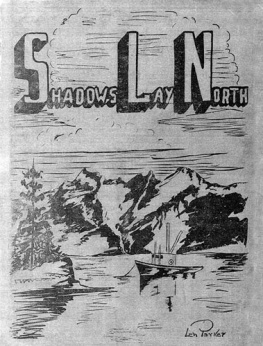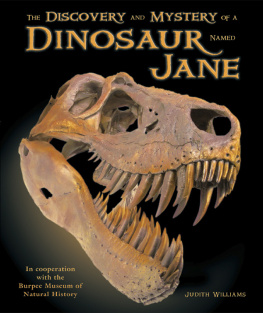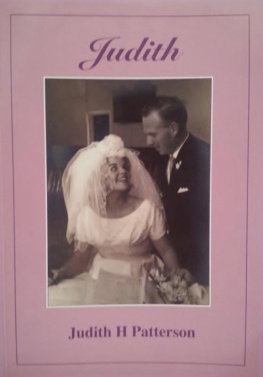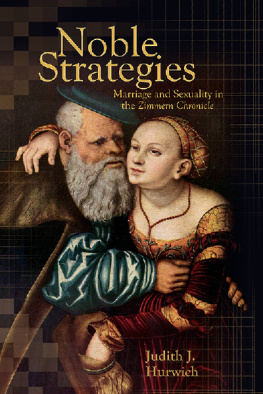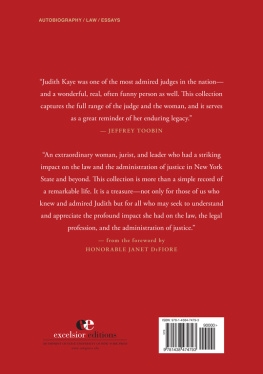Williams Judith - Raincoast Chronicles 24
Here you can read online Williams Judith - Raincoast Chronicles 24 full text of the book (entire story) in english for free. Download pdf and epub, get meaning, cover and reviews about this ebook. year: 2019, publisher: Lightning Source Inc. (Tier 3), genre: Detective and thriller. Description of the work, (preface) as well as reviews are available. Best literature library LitArk.com created for fans of good reading and offers a wide selection of genres:
Romance novel
Science fiction
Adventure
Detective
Science
History
Home and family
Prose
Art
Politics
Computer
Non-fiction
Religion
Business
Children
Humor
Choose a favorite category and find really read worthwhile books. Enjoy immersion in the world of imagination, feel the emotions of the characters or learn something new for yourself, make an fascinating discovery.
- Book:Raincoast Chronicles 24
- Author:
- Publisher:Lightning Source Inc. (Tier 3)
- Genre:
- Year:2019
- Rating:5 / 5
- Favourites:Add to favourites
- Your mark:
- 100
- 1
- 2
- 3
- 4
- 5
Raincoast Chronicles 24: summary, description and annotation
We offer to read an annotation, description, summary or preface (depends on what the author of the book "Raincoast Chronicles 24" wrote himself). If you haven't found the necessary information about the book — write in the comments, we will try to find it.
Raincoast Chronicles 24 — read online for free the complete book (whole text) full work
Below is the text of the book, divided by pages. System saving the place of the last page read, allows you to conveniently read the book "Raincoast Chronicles 24" online for free, without having to search again every time where you left off. Put a bookmark, and you can go to the page where you finished reading at any time.
Font size:
Interval:
Bookmark:
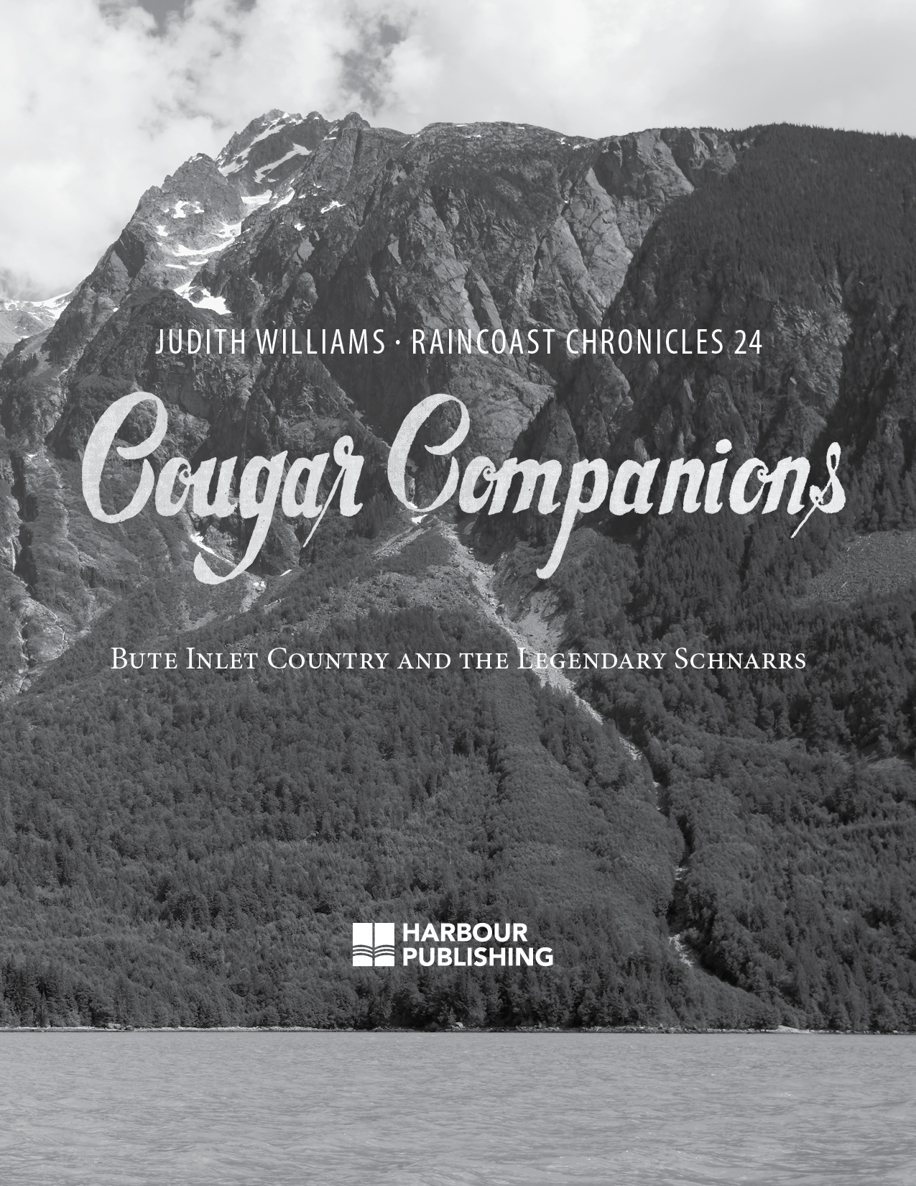
What do I mean when I say I am reading the Schnarr images? If I lay the photographs down in suits, adding Augusts late-life commentary, Pearls explications and Pansys and Marions notes, I create a shaky timeline. What can I learn? Person, place, perhaps a date? If I really look, I might discern a tonal or psychological ambiance, a reason for the photo, perhaps a larger meaning. Here is young Marion around 192830, with a caged mink, a note says. Or is that a marten? How about those striking diagonals and dreamy layers of sun-filtering mesh? How does Marion, or how do I, feel about caged animals raised for fur? An image like this, suggesting a more complex depth to an early Bute family photo sequence, can send me off on a new image run. Conflicting stories can send me running in circles. Memory is not a science. A reading is not necessarily conventional history.
The oldest dated image in Pearls Cougar Companions is said to show August at the Grizzly on the Klinaklini Glacier (see photo on page x). In the interview he gave the Campbell River Museum in 1977, August said hed trekked there in 1913, which was when the photo was taken with his camera. It was not taken when he was guiding surveyors for the BC governments Water Rights Branch up the Homathko and Southgate Rivers. However, the same photo is in the BC governments Water Power Investigation report labelled Foot of Tiedemann Glacier, Homathko River. On the same page of the report is a Schnarr photo that could be the Tiedemann Glacier, and these two images illustrate the caution needed when dating Augusts work based on his, Marions or Pearls later memories and the notes of others. The negative of August looking back at us looking at him and the glacier formation is in the museums Schnarr collection, donated by his family, and as important to me as the location is seeing the case for the camera he used from 1910 into the 60s strapped to his suspenders. A companion shot is firmly labelled Schnarr standing on the Kleena Kleen Glacier.
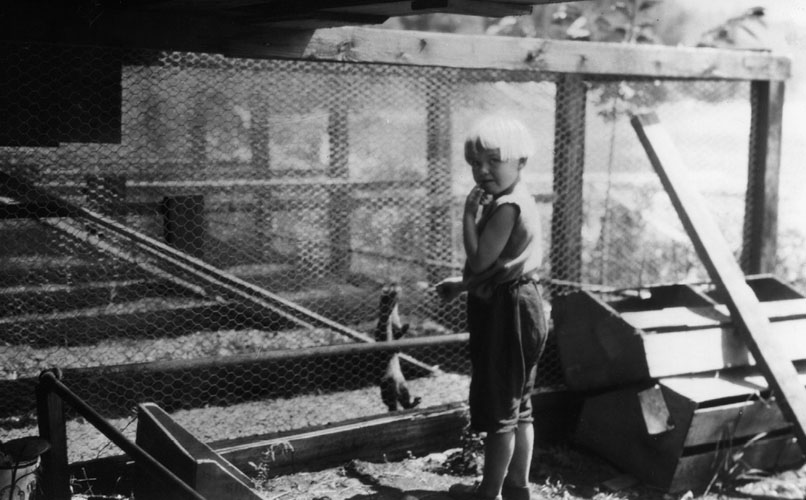
Marion with mink or marten at Schnarrs Landing animal sheds.
August Schnarr photo. Image MCR 11641 courtesy of the Museum at Campbell River
August told his interviewers he was last in Knight Inlet in 1915/16, and while there he learned to carve and pole the long, shallow dugouts the Tenaktak People used on the Franklin and Klinaklini Rivers. In their earliest coastal days, when logging ended in the fall, August and his brothers, who had joined him in British Columbia, took themselves as far into the wilderness as they could to hunt and trap. I had asked Pearl where August learned his woodcraft.
They lived down in Centralia, Washington, she said. German Americans. August was eldest. When Dad and Johnny and Gus got older, they chased their father away with his own gun. Drank. They farmed and hunted for a living. Marion wrote Rumrunner about Johnnys activities out of Victoria during the US alcohol Prohibition from 1920 to 1933. He visited Bute sometimes. Smart aleck! They didnt get along.
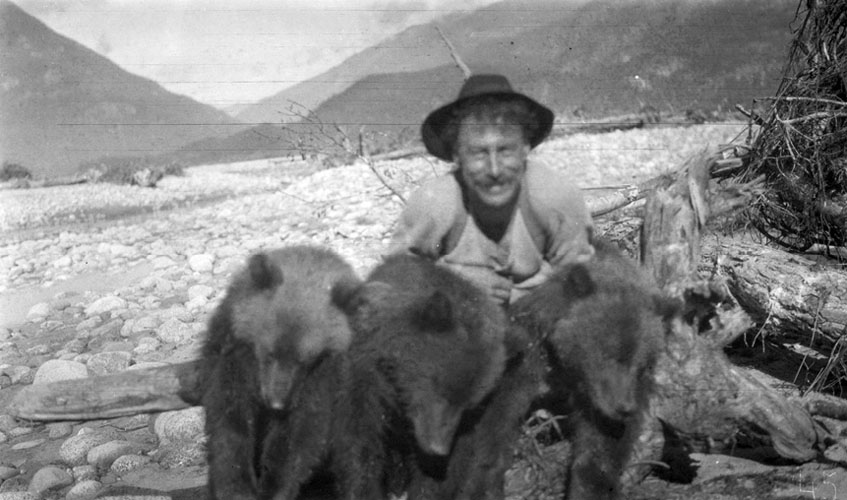
Ray Walker with grizzlies shot by August, Knight Inlet, c. 1915/16.
August Schnarr photo. Image MCR 20447-42 courtesy of the Museum at Campbell River
Like any person wishing to survive in the backcountry, August was precise about location and distance. While in Knight Inlet he told interviewers Skogan and Havelaar that he caught the Klinaklini River there clean through the canyon to the Interior. At the head of Knights there used to be an Indian reserve, great big totem poles. I used to take the canoes upriver, and thats where I learnt how to... make canoes and handle them. I used to take them up the canyon to that big glacier. I had a shack there right at the canyon mouth. Theres a creek comes in from the Klinaklini Glacier, over all the way down to the gravel bar. Then it comes onto the river and just there, theres a canyon. Well, just above that, in there, I had a shack.
August and his interviewers were usually looking at his photos to spark such memories, as Pearl and I did going through Cougar Companions.
Theres Ray Walker [with] three grizzlies I shot up in Knight, August said. Shot at the old one but she ran off.
Pearl said August partnered with Ray Walker, and the men trapped together in Knight during 1915/16. The photo of Ray with three grizzlies may be Augusts first image promoting his hunting skills. He was convinced he could earn a living in one of the inlets.
When August returned from trapping in Knight in 1916, he logged around Port Hardy on Vancouver Island, and in Shoal and Rock Bays. He was handlogging in Blind Channel, between West and East Thurlow Islands, when the larger world intruded and he and Johnny, who had moved back south, were drafted into different outfits to fight in the Great War.
In the 1960s, Ray Walkers younger brother, Dennis, related how their family and other settlers took up land at the Southgate River Township in Bute in the 1890s.
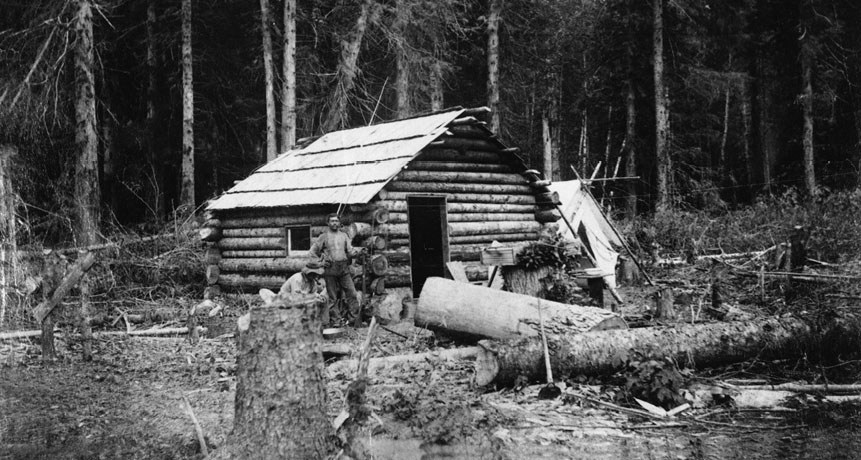
Homesteaders on the Southgate.
Image B-05985 courtesy of the Royal BC Museum and Archives
Denniss father, W.G. Walker, was living in England in 1892 when he heard of a proposed Grand Trunk Pacific (now the CNR) railway route from Chilcotin territory to the head of Bute Inlet. He brought his wife and eight children to Vancouver. Then, Dennis said, Father left for the upcoast to land hunt in a sailboat with two men who were going prospecting. They put him off at the head of Bute Inlet where three trappers, Ben Franklin, Tony Bernhardt and Mart Blanchfield, lived.
Franklin, a pioneer trailblazer and old-time trapper, owned a ranch at Tatla Lake in Chilcotin country. It is said he and his wife came from the Chilcotin over a well-used but dangerous Indigenous trail to take up Bute land.
Denniss father liked the Southgate and moved his family there in March 1893. They stayed with the three trappers, who built them a log house where a shallow flat of land swings west of the river mouth. Mr. Walker bought 40 acres upriver from Ben Franklin.
As soon as we were settled in, Dennis said, we had to start clearing land. How we managed is beyond me, for we knew nothing about backwoods life, but we got by.
On June 25, 1895, the Vancouver News-Advertiser claimed settlers were coming in fairly large numbers. The reporter noted that the local merchant had paid out $5,000 for the best bear skins he had ever seen, and now that bear season was over, he had several of the Indians logging for him. They appear respectable, well dressed, have plenty of money and are erecting some good houses. Their gardens are also looking well.
With the help of Homalco People they employed, the Southgate settlers raised potatoes, but the spuds shipped to Vancouver barely paid for their freight. A newborn Walker baby died, and then two of their daughters; the railway took another route; and the family, like the rest of the settlers, moved on.
Year of 16? 17? August said. I went overseas in the First World War. I was in the American Army... I wasnt a [Canadian] citizen yet. They drafted me from this side. I coulda been back in the woods here and I wouldnt have known... but I went over and... it was quite an experience all right. I shoulda died there. Like they said, Its hell on you boys! Most of them died with pneumonia and dysentery. Theres nothing to eat, laying on the cold ground... you see, when you read about things like that, you never get the truth. You always hear about battles theyre fighting and how they get their wounded out. The wounded are left lying there! I got pneumonia, just got sicker and sicker... they picked me up... took me back behind the hill... behind the shelling, but the shells came right over the top... killed thirteen. Well, the next morning I was half covered with dirt.
Next pageFont size:
Interval:
Bookmark:
Similar books «Raincoast Chronicles 24»
Look at similar books to Raincoast Chronicles 24. We have selected literature similar in name and meaning in the hope of providing readers with more options to find new, interesting, not yet read works.
Discussion, reviews of the book Raincoast Chronicles 24 and just readers' own opinions. Leave your comments, write what you think about the work, its meaning or the main characters. Specify what exactly you liked and what you didn't like, and why you think so.

